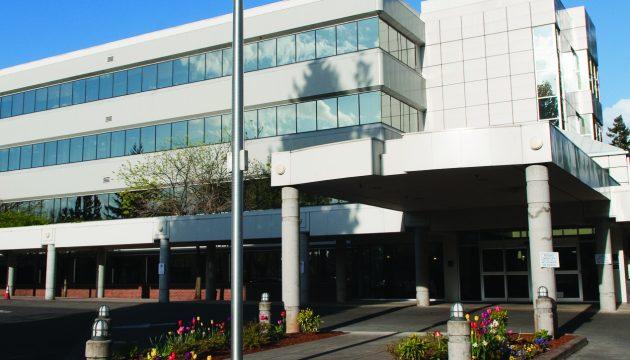
Washington state hospitals are preparing for a COVID-19 surge, nine months after the state had the first case in the U.S. and became an early epicenter of the pandemic.
Right now, the state’s hospitals do not have more COVID-19 patients than they can handle.
But PeaceHealth’s hospitals in Southwest Washington are making contingency plans for an upswing in cases.
Already, there are “some early warning signs that we may be heading into a rough patch,” Dr. Lawrence Neville, chief medical officer for PeaceHealth in Southwest Washington, said Thursday in a call with reporters.
COVID-19 cases continue to increase in Clark County. Public health officials there said in a news release that the per-capita rate of cases has reached its highest point since July, when the county first started tracking that metric. Clark County’s rate of new cases is nearly 125 per 100,000 residents, up from about 115 last week.
Clark County has had about 4,600 COVID-19 cases since the pandemic started. Currently, the county has experienced an average of about 50 new cases each day since Friday.
About 6% of the county’s hospital beds are now serving COVID-19 patients, well under surge capacity.
“Here’s the good news: We’re still in good shape in terms of capacity and ability to care for COVID patients in our community,” Neville said.
PeaceHealth’s 450-bed Vancouver hospital is the largest in the area. The only other acute-care hospital in the county is Legacy Salmon Creek Medical Center in Vancouver, with 220 beds.
PeaceHealth’s Vancouver hospital has 23 beds dedicated to COVID-19 patients, with 16 in one unit and seven beds in an intensive care unit.
“They are literally sealed off from the rest of the hospital,” Neville said.
Neville said the hospital could set up another COVID-19 unit within 24 hours if a surge developed by bringing in nurses and setting up walls to keep COVID-19 patients separated from others.
“We have a moral obligation to plan for the worst,” Neville said.
In Oregon, PeaceHealth operates four hospitals in Eugene, Springfield, Florence and Cottage Grove.
COVID-19 is now the third leading cause of death in the U.S. after heart disease and cancer, according to the Centers for Disease Control & Prevention. To curb the spread, public health officials have urged people to continue to wear masks, social distance and get a flu shot. The CDC has warned the public not to go trick or treating for Halloween and to limit family gatherings this holiday season.
Washington state has been much harder hit than Oregon by the pandemic, with more than 105,000 cases and nearly 2,400 deaths. In Oregon, about 670 people have died of COVID-19 among nearly 44,000 cases.
In Washington, 3% of hospital beds statewide have COVID-19 patients, state data show. That’s 450 out of 14,540 beds. Public health officials have set a goal for COVID-19 patients to occupy fewer than 10% of all licensed hospital beds in the state and for a maximum occupancy of 80% overall. Right now, nearly 63%. of the state’s hospital beds are filled.
Oregon public health officials have not set similar targets.
In a statement to The Lund Report, Dr. Dana Hargunani, the Oregon Health Authority’s chief medical officer, said hospitals have a variety of tools to manage bed capacity for a surge.
“This could include postponing elective procedures, using hospital beds or wings that are currently unused, or adding staffing capacity to their inpatient units,” Hargunani said. “In addition, Oregon has built on its pre-pandemic plans whereby OHA and hospitals work in partnership across Health Preparedness Program Regions to plan for a regionalized response to health emergencies.”
This approach allows hospitals in an area to work together and distribute patients for inpatient and emergency care based on capacity, including beds, staff and equipment, Hargunani said, adding “In face of a surge, hospitals can call on help from hospitals in neighboring communities to ensure patients get needed care, instead of working in isolation as individual facilities.”
Oregon currently has 152 open adult intensive-care beds, out of 706 statewide.
There are 630 adult non-intensive care beds available out of 4,518 beds, according to health authority data. Currently, 235 Oregonians are in the hospital with suspected or confirmed COVID-19, with 62 patients in intensive-care beds.
You can reach Ben Botkin at [email protected] or via Twitter @BenBotkin1.

